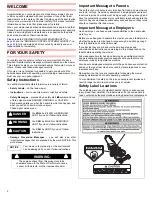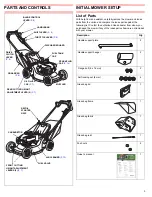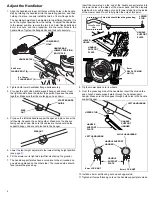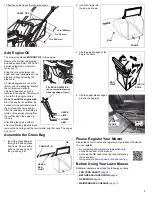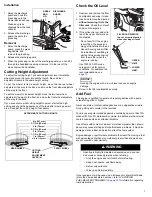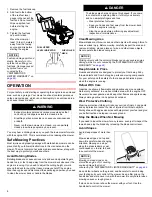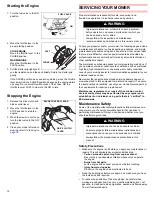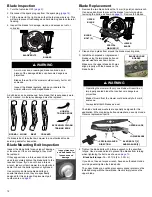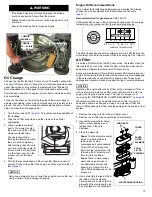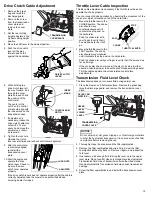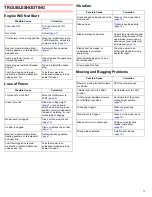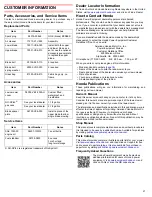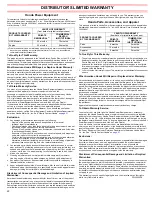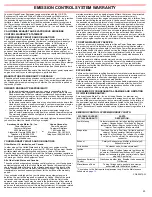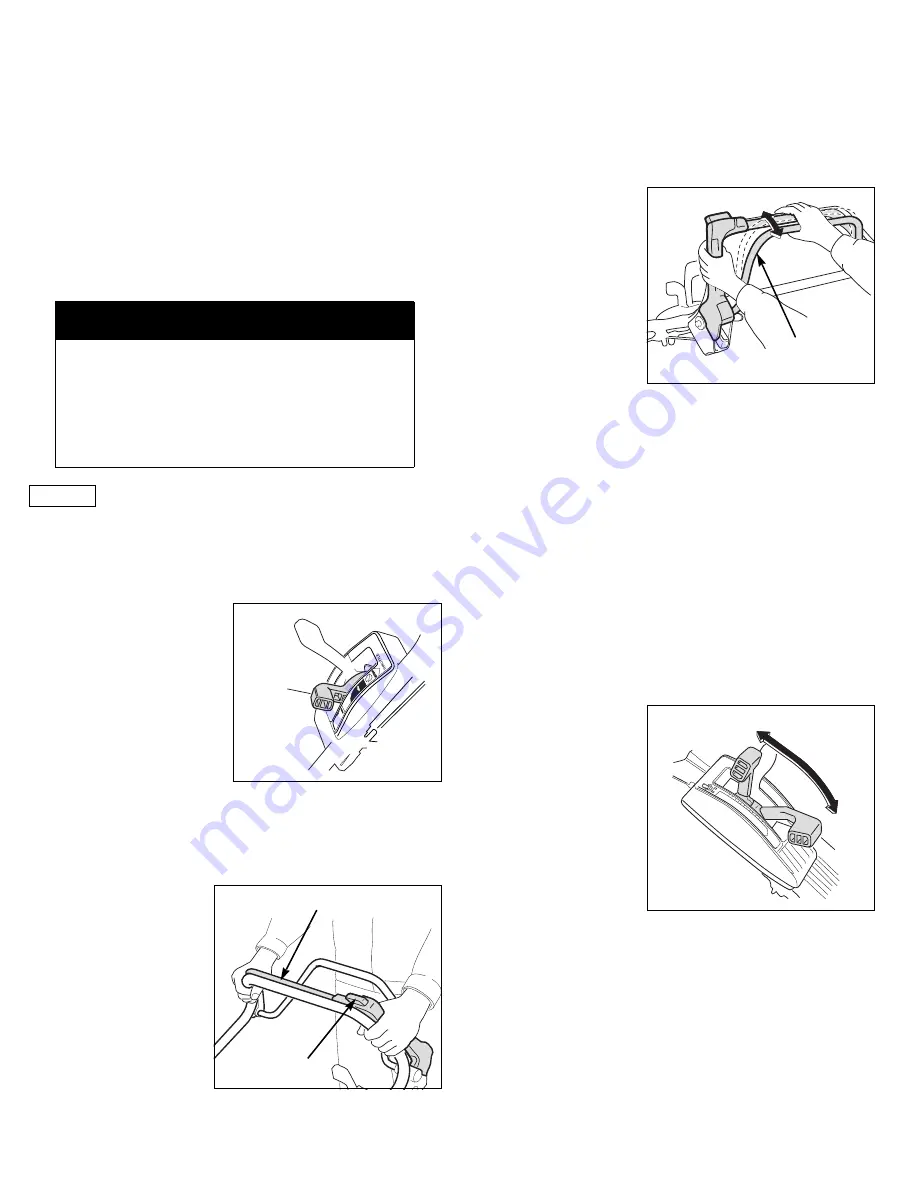
9
Avoid Obstacles
Gravel, loose stones, and landscaping material can be picked up by
the mower and thrown many feet with enough force to cause serious
personal injury and/or property damage. The best way to prevent
potential injury from thrown objects is to release the blade control
lever to stop the blades before reaching areas with gravel, loose
stones, or landscaping material.
Be careful when mowing over obstacles that stick up above the
surface of the lawn such as sprinkler heads, paving, edging, raised
tree roots, etc.
If the blade hits something, or if the mower starts to vibrate, stop the
engine immediately, disconnect the spark plug cap, and check for
damage (
). Striking objects may damage the blades, bend the
crankshaft, and/or break the mower deck or other components.
Vibration usually indicates serious trouble.
NOTICE
The
“DISTRIBUTOR’S LIMITED WARRANTY” on
does not
cover parts damaged by accidental impact collision.
Operating the Controls
Throttle Lever
For best cut quality, always mow
with the throttle lever in the FAST
position. When the blades rotate
at the preset fast speed, it
creates a strong fan action that
lifts and cuts grass more
efficiently.
Do not try to increase the preset
engine speed; the blades could
fracture and come apart. The
additional vibration may result in
other damage that is not covered by the Distributor's Limited
Warranty.
Blade Control Lever
To start blade rotation, make
sure the throttle lever is in the
FAST position and the engine
has been allowed to warm up
for 30 seconds or more.
1. Press the button
on top
of the blade control lever.
2. Push the blade control
lever
forward quickly
and hold it against the
handlebar.
3. Continue to hold the blade
control lever against the handlebar to maintain blade rotation.
4. Operate the blade control lever with a quick and complete motion,
so the blade control is always either fully engaged or stopped. This
will help prevent stalling the engine, and it will also extend the
service life of the blade control mechanism.
5. Always release the blade control lever before starting the engine to
prevent the blades from turning.
Drive Clutch Lever
With the engine running, push
the drive clutch lever forward
to propel the mower forward.
Release the drive clutch lever
to stop the mower’s forward
movement.
You can control self-propelled
speed with the drive clutch
lever. The mower will move
gradually faster as you push
the drive clutch lever forward.
If you push the lever all the
way forward to the handlebar, the mower will move at the speed
determined by the shift lever setting.
When moving and using the drive clutch lever to change
self-propelled speed, continue to fully hold the blade control lever
against the handlebar. This will help prevent damage to the blade
control mechanism. Use the shift lever to change the maximum speed
so you can hold the drive clutch lever comfortably against the
handlebar.
For self-propelled mowing, press the button on top of the blade control
lever, push the blade control lever forward, then push the drive clutch
lever forward. The drive clutch lever can be used to hold the blade
control lever against the handlebar.
Always release the drive clutch lever before starting the engine. If the
drive clutch is engaged, the mower will move forward when you
operate the starter.
Shift Lever
Use the shift lever to select
the forward speed at which
you wish to mow.
Do not use the throttle lever
to adjust your forward speed.
The throttle lever must remain
in the FAST position for good
mowing performance.
Otherwise, cut quality suffers.
The position of the shift lever
determines the maximum
ground speed when the drive
clutch lever is fully engaged.
If you wish to momentarily slow the mower during operation, partially
release the drive clutch lever, then resume your normal speed by
pushing the drive clutch lever forward again. It is not necessary to
move the shift lever for momentary speed reduction.
For maximum mowing performance, use the lower speed range for
mowing and the higher speed range for transporting.
WARNING
A worn, cracked, or damaged blade can break, and
pieces of the damaged blade can become dangerous
projectiles.
Blades thrown from the mower could seriously hurt or kill
someone.
Inspect the blades regularly (see
), and do not
operate the mower with a worn or damaged blade.
FAST
BUTTON
BLADE CONTROL LEVER
DRIVE CLUTCH
LEVER
THROTT
LE
FAST
SLOW
SHIFT LEVER


